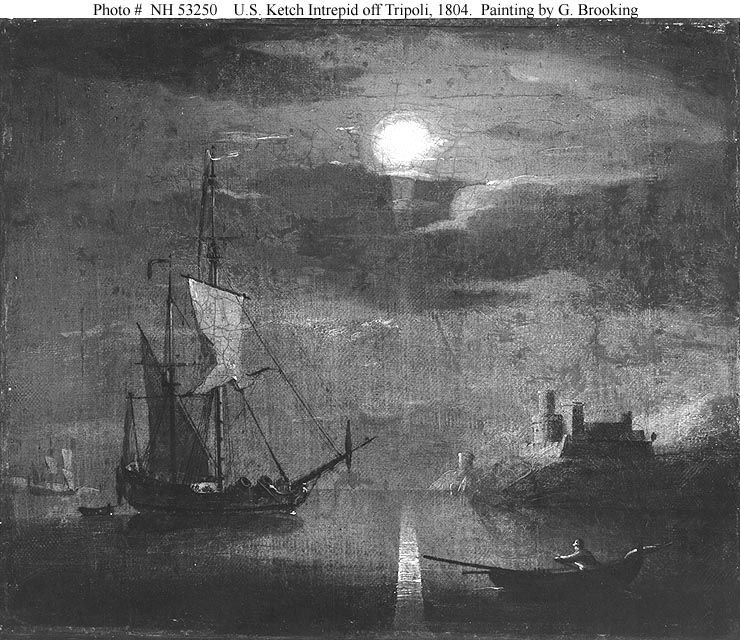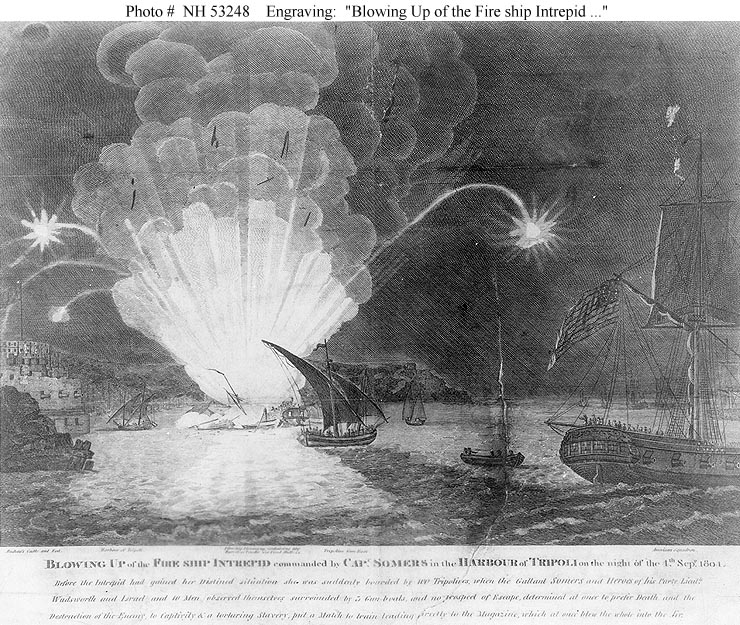Fullbore Friday
 USS Intrepid. No, not the big girl, the first one. All 60' of her.
USS Intrepid. No, not the big girl, the first one. All 60' of her. Intrepid and Syren set sail 2 February and arrived off Tripoli 5 days later. However, bad weather delayed the operation until 16 February. That evening Syren took station outside the harbor and launched her boats to stand by for rescue work. At 7 o'clock Intrepid entered the harbor and 2 1/2 hours later was alongside Philadelphia. When hailed, they claimed to be traders who had lost their anchor in the late gale, and begged permission to make fast to the frigate till morning. Guards suddenly noticed the ketch still had her anchors and gave the alarm.[1] Leaving a small force commanded by Surgeon Lewis Heermann on board Intrepid, Decatur led 60 of his men to the deck of the frigate. A brief struggle, conducted without firing a gun, gave the Americans control of the vessel enabling them to set her ablaze. Decatur, the last man to leave the burning frigate, remained on board Philadelphia until flames blazed from the hatchways and ports of her spar deck. When he finally left the ship, her rigging and tops were afire. Shore batteries opened up on Intrepid as she escaped only to be answered from abandoned Philadelphia when her guns discharged by the heat of the conflagration.
When Lord Nelson, then blockading Toulon, heard of Intrepid he is said to have called it "the most bold and daring act of the age."
Good enough for Lord Nelson, good enough for Fullbore Friday. And yes, I like out ships to be named Intrepid, Decatur, and Preble - and not Stennis, Carter, Ford etc....

 USS Intrepid. No, not the big girl, the first one. All 60' of her.
USS Intrepid. No, not the big girl, the first one. All 60' of her. 
No comments:
Post a Comment